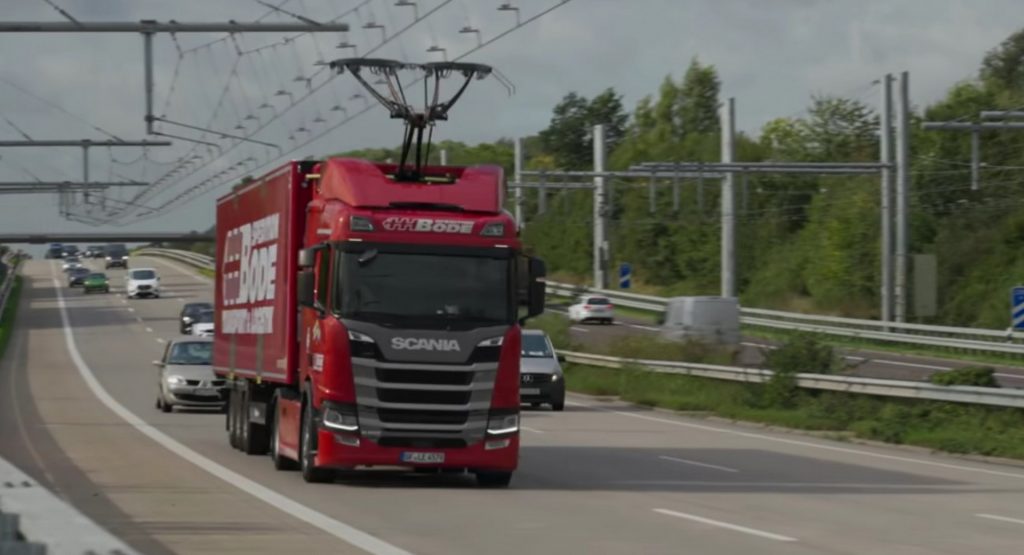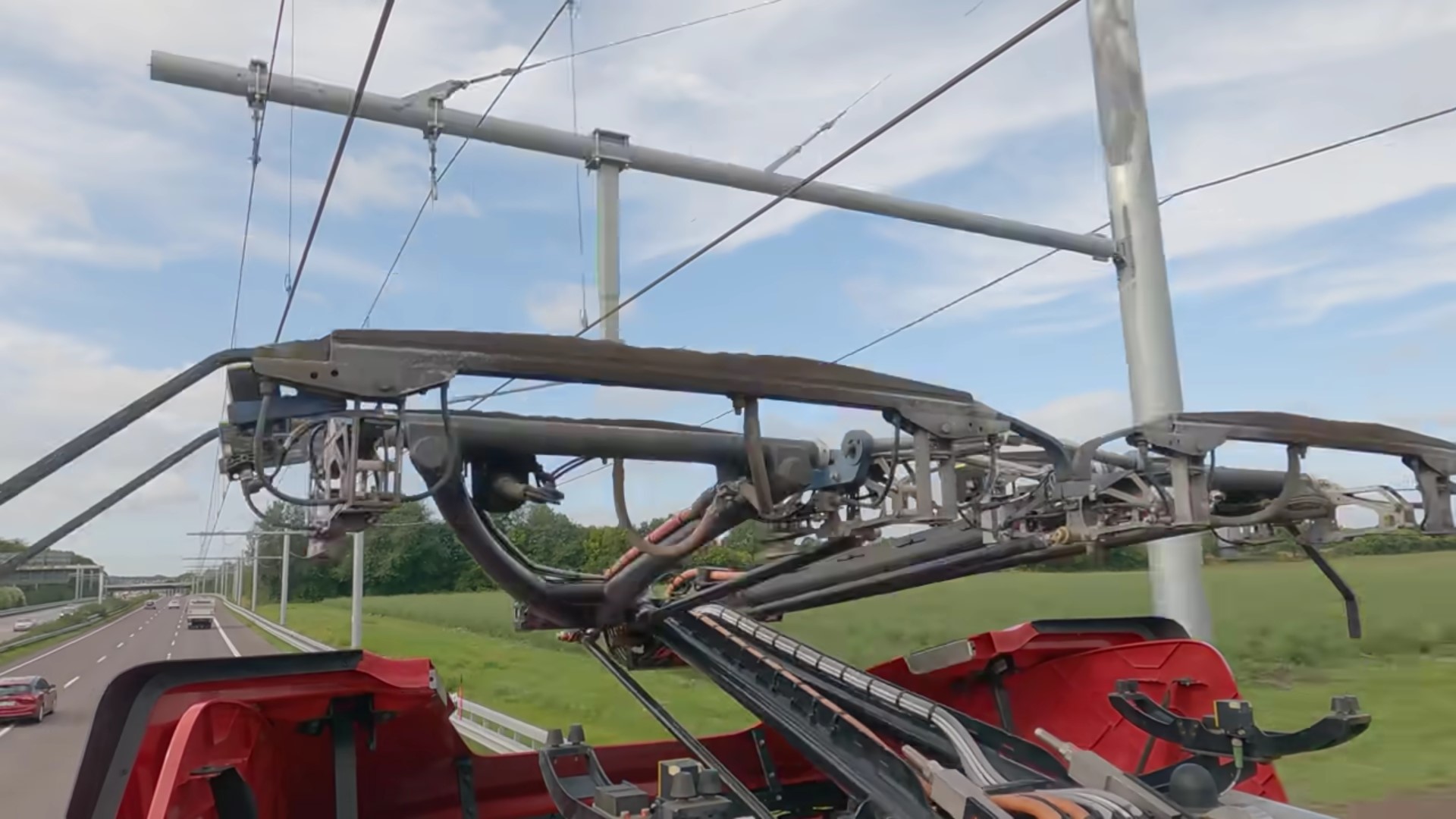Mercedes, Volvo, and others have been making big announcements about the future of electric trucking, but so far, they seem to only have last-mile delivery trucks with relatively short ranges. In Lübeck, Germany, a solution for longer-distance trucking is being tested.
The technology on the highway isn’t particularly new, but it could help make long-distance electric trucking a possibility, as this video from Tom Scott argues. By using overhead power cables, such as those that some streetcars and trains use, the trucks could simply use grid power instead of battery power.
The cables are hung over the first lane of a highway, allowing trucks to extend a connector that slides across the wire, powering the motors that propel the truck. The test has been running for almost two years and will go on for another year at least.
Read Also: Futuricum Electric Truck Goes 683 Miles On A Single Charge, Sets Guinness World Record
Since the connector just slides along, the trucks can still go onto internal power, be that electric or diesel, when they need to pass another vehicle or get off the highway entirely. But in scenarios, such as transport that gets containers frorm ports to warehouses, they could perform the majority of their trip on grid power, reducing the need for heavy batteries.
According to Jan Bahcmann, the project manager for the eHighway Lübeck, at full scale, the wires would be on one third of German highways, which he says would reduce greenhouse gas emissions from the trucking industry by two thirds.
Of course, the system would only really work for trucks that are mainly driving on the highway, but from there, smaller trucks that need to travel shorter distances, like the Mercedes eActros, could take over.
As with any infrastructure project, it would be expensive, but according to David Cebon, a professor of Mechanical Engineering at the University of Cambridge, there is a way to make it pay for itself by selling electricity at a rate that’s cheap enough to make sense for truckers, while still paying for initial investment and upkeep of the system.
Although by no means the only possibility to make long-distance trucking work, there is an attractive simplicity to the concept.









